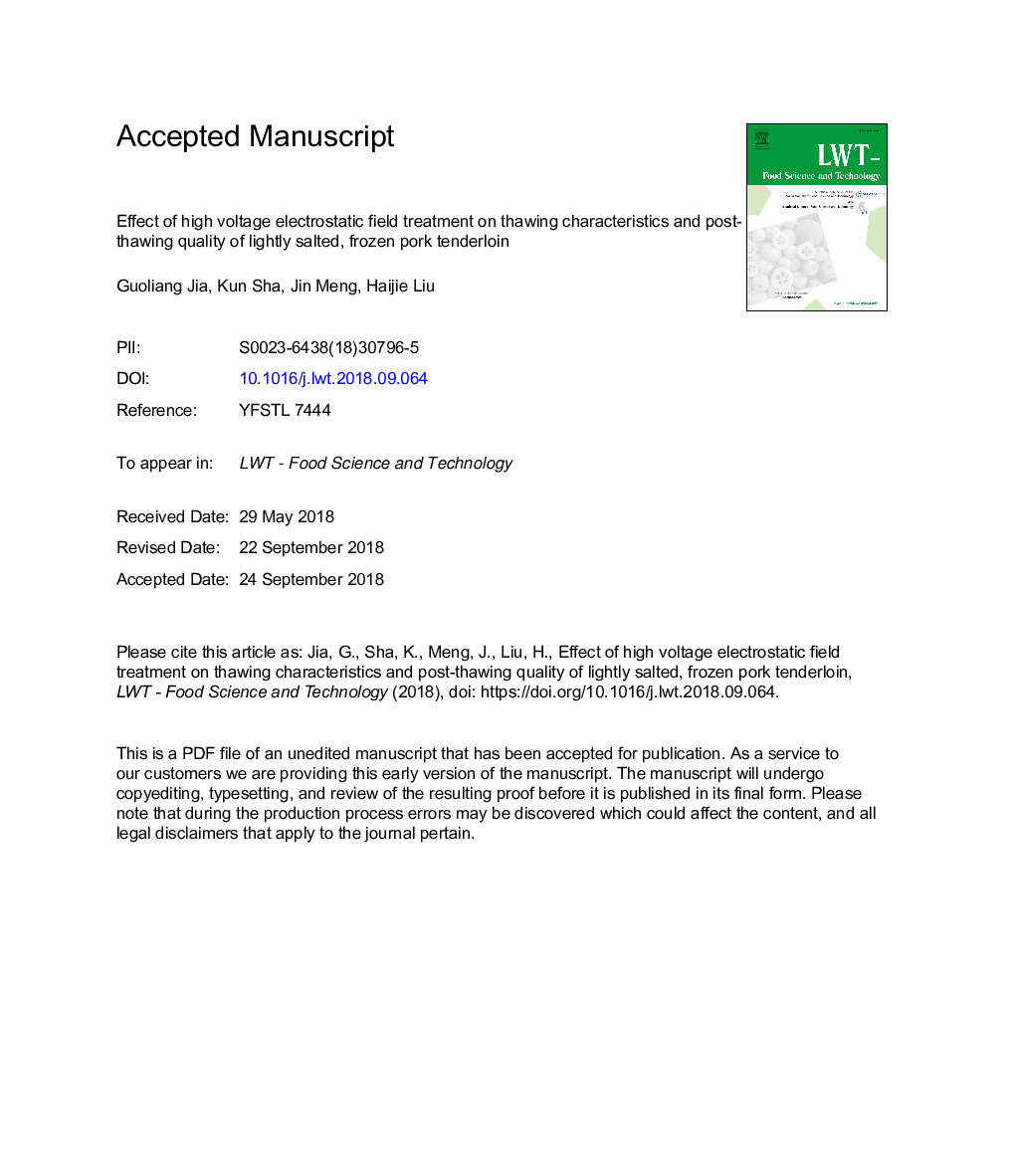| Article ID | Journal | Published Year | Pages | File Type |
|---|---|---|---|---|
| 11024869 | LWT - Food Science and Technology | 2019 | 36 Pages |
Abstract
The thawing characteristics, initial thawing mechanism and post-thawing quality of lightly salted, frozen pork tenderloin following the use of high-voltage electrostatic fields (HVEFs) were investigated in this study. The thawing rate increased with increasing salt concentrations for pork thawed by a â10â¯kV or â15â¯kV HVEF. Thermal property values of pork changed with increasing salt concentration (0-6%). HVEFs could enhance salt diffusion during the thawing process. The pork tenderloin thawed using HVEFs had significantly less drip loss (Pâ¯<â¯0.05) than occurred during air thawing, which was also proven by the myosin denaturation enthalpy (â0.05â¯Â±â¯0.03â¯J/g for the air-thawed samples and â0.24â¯Â±â¯0.03 for the â10â¯kV HVEF-thawed samples). Additionally, there is apparent sample grouping with respect to the thawing methods between 30â¯ms-100â¯ms after PCA analysis. Thawing with â10â¯kV and â15â¯kV HVEFs resulted in a 0.5 log reduction in the number of Pseudomonas in the pork tenderloin compared with the number in the air-thawed group at day 0.
Related Topics
Life Sciences
Agricultural and Biological Sciences
Food Science
Authors
Guoliang Jia, Kun Sha, Jin Meng, Haijie Liu,
